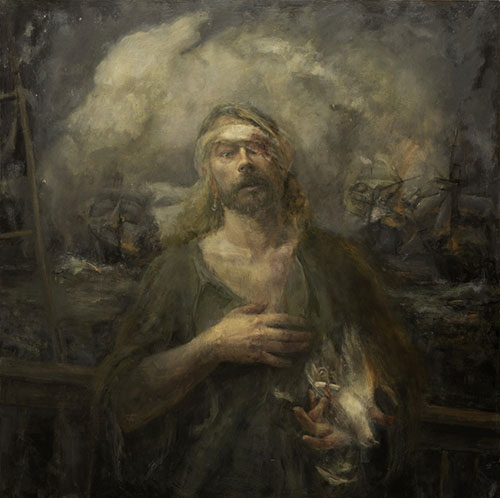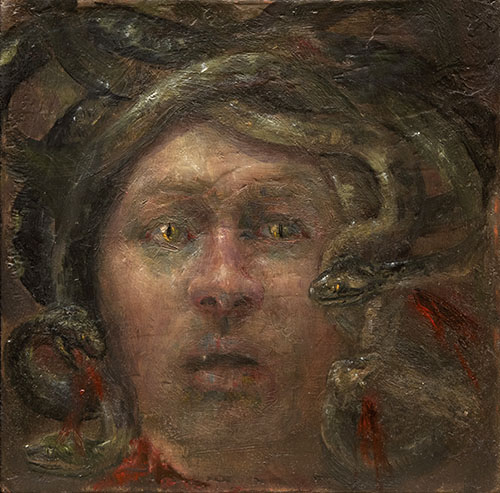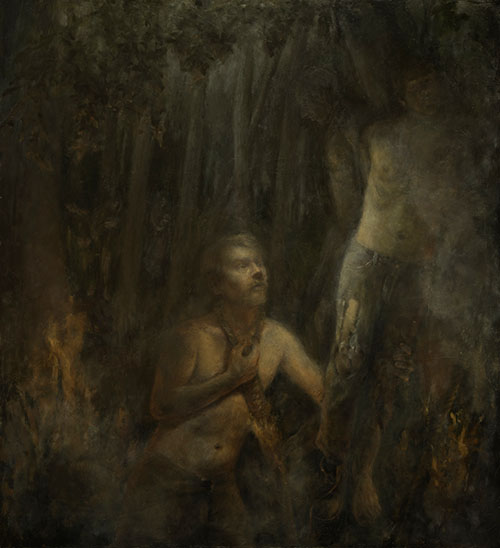Messenger


I have always admired great painters and storytellers, specifically how works made hundreds or thousands of years in the past still hold such powerful meaning and influence over me. Perhaps this is what led me to become a painter. Much like my influences, I strive to bring a timeless narrative filled with pathos, sentimentality, and sensuality to my work.
Now in our chaotic times, storytelling is more relevant than ever. As a society, we have mainly become self-absorbed in digital worlds with our devices. Social media has replaced meaningful relationships, detached us from or distorted our realities, and in my opinion, destroyed our empathy for one another. It is easy to dehumanize and to be dehumanized. One might argue that a lack of empathy has played a significant role in the dire circumstances we currently face each day. Precisely what I want to reintroduce to my audience through universal stories is empathy.

I employ various techniques and methods in my paintings to construct realism. The goal is not a photographic representation but to convey a visceral moment that feels like a lived experience. I observe, adapt, and combine approaches that I find in the great works of masters stretching from Hellenistic Greece to the Baroque periods.
I am not concerned with every detail but rather a hierarchy of focus. For example, I paint clearer where I want the viewer to look, while in other areas, I blur to various degrees of the peripheral, much like the human eye works. Imagine that you are viewing a beautiful face; how in focus would the hands be at that moment? I am not painting a picture but a moment in motion, a story, or a dream.
I weave the contours together with energetic mark-making instead of butting them up against one another. The background comes into the figure's shirt, the shirt passes the borders of the skin, and the flesh is painted into the clothing, melting together. I create the illusion by solidifying one mark or contour to put it all into context. This process creates unity and energy in the painting, making it feel more lifelike or animated. The story is now urgent, a fleeting moment.

I rid the story of any distractions that could detract from the viewers' experience. I limit the color palette, only using bright colors when necessary and enhancing the narrative; I heighten the contrast to pull more drama and significance to the situation.
I use texture through continuous scraping and sanding to erode the painting, making it feel like an artifact, something delicate that needs protecting. I love old books and antiques; I'm fascinated by the history of objects and their stories. I want my paintings to have that same sense of wonder. I think this kind of sentimentality is a common experience to which we all can relate.
To enter the eternal realm of the universal, one must ignore the individual's voice and step outside of personal expression. Strip the work of one's individualistic views and time, replaced with a sense of common individuality. To acknowledge a pastness of the present, something that all humans from any time can relate to, you then achieve something universal and outside of yourself. The painting becomes better than the painter. I have chosen a difficult path filled with goals I may never achieve, but the journey is well worth the sacrifice for me.
Shaun Roberts lives and works in Nacogdoches, Texas. He is an Associate Professor of Art at Stephen F. Austin State University.